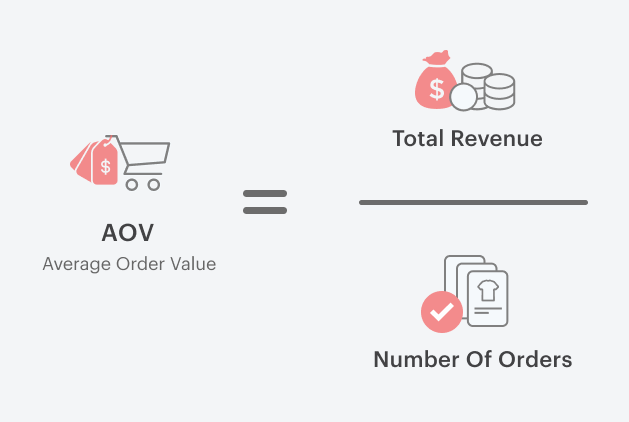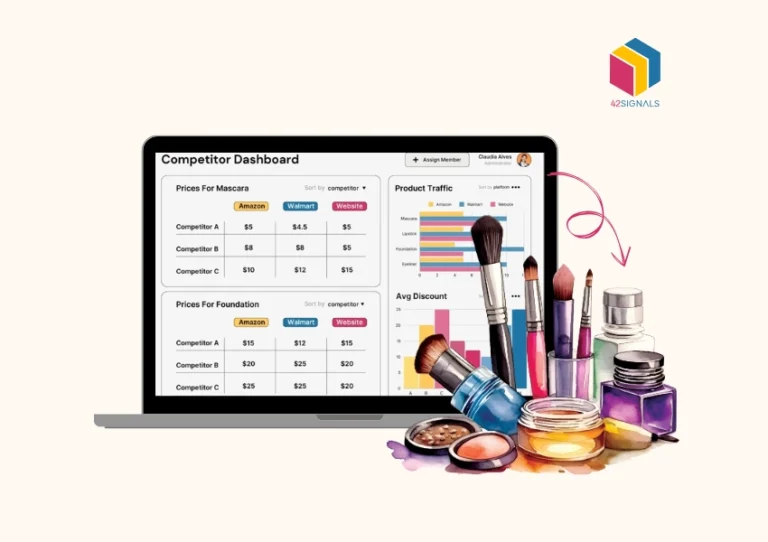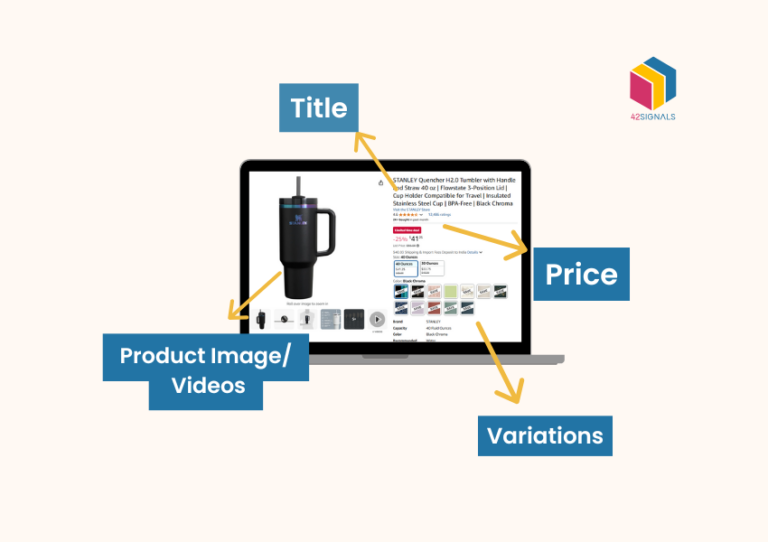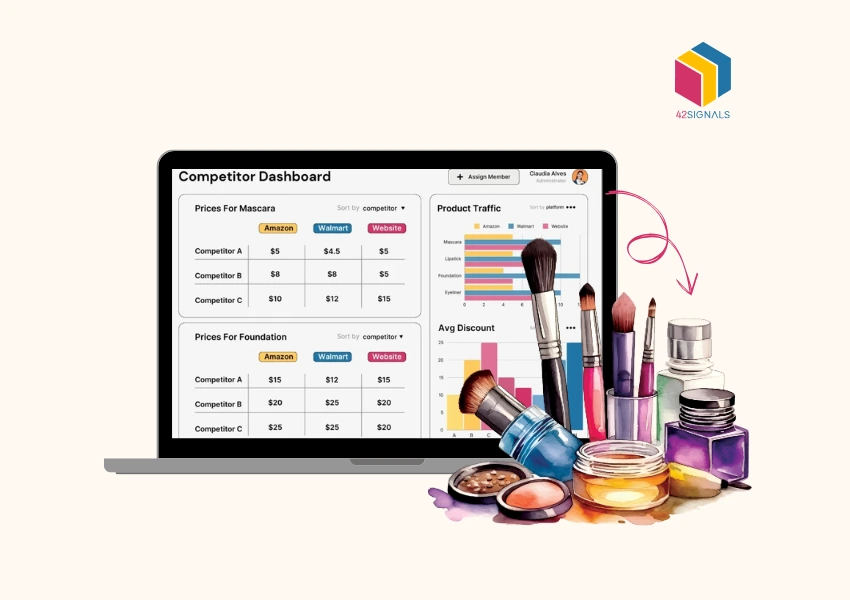The rapid growth of online shopping has transformed consumer behavior, making it crucial for companies to establish a strong online presence. The success of an e-commerce venture, however, is not solely dependent on product quality or a visually appealing website. Instead, it hinges on a multitude of tangible metrics that provide deep insights into customer behavior, website performance, and overall business health. The rise of eCommerce analytics tools has made it easier for businesses to monitor these metrics, offering a comprehensive view of how products and services are performing online.
When leveraged appropriately, these metrics can be the driving force behind enhanced growth and profitability, providing actionable data that supports informed decision-making.
In this article, we will look into the essential eCommerce metrics that every online business should monitor to ensure sustained success. By understanding and acting upon these metrics, businesses can optimize their operations, improve customer satisfaction, and ultimately, achieve their long-term goals.

Image Source: Tresl Segments
The Importance of ECommerce Metrics
ECommerce metrics are vital because they offer a quantitative measure of a business’s performance. These metrics help identify strengths and weaknesses, allowing businesses to make data-driven decisions that can lead to significant improvements in their online operations. Moreover, these metrics provide insights into customer behavior, helping businesses understand what drives sales, what deters potential buyers, and how they can enhance the overall shopping experience.
A comprehensive checklist of these metrics is invaluable for businesses, whether they are just starting out or are well-established in the online marketplace. Let’s explore some of the most crucial metrics that can propel a business toward success.
ECommerce Metrics Checklist for Business Success
Website Traffic
Website traffic is the lifeblood of any online business. It reflects the number of visitors arriving at your site, providing a direct insight into the effectiveness of your marketing efforts and the visibility of your brand online. However, it’s not just about the volume of traffic but also the quality.
Breakdown
Businesses should monitor the sources of traffic—whether organic (from search engines), paid (from ads), referral (from other websites), direct (from people typing the URL directly), or social (from social media platforms). Understanding which channels are the most effective allows businesses to allocate resources efficiently and focus on the strategies that yield the best results
Conversion Rate
Traffic alone doesn’t guarantee success; what truly matters is how many of those visitors take actions that contribute to your business goals, such as making a purchase or signing up for a newsletter. The conversion rate is a critical metric that measures the percentage of visitors who complete these desired actions.
Breakdown
Tracking conversion rates for different actions can reveal insights into your site’s usability and the effectiveness of your calls to action. A low conversion rate might indicate that potential customers are encountering barriers, such as a complicated checkout process or unclear messaging. By identifying these issues, businesses can make necessary adjustments to improve user experience and boost conversions.
Average Order Value (AOV)
The Average Order Value (AOV) represents the average amount a customer spends each time they place an order. This metric is essential for forecasting revenue and developing pricing strategies.

Image Source: EShopBox
Breakdown
Businesses can increase their AOV by implementing strategies such as upselling (encouraging customers to purchase a higher-end product) and cross-selling (suggesting complementary products). Additionally, offering bundle deals or discounts on larger purchases can incentivize customers to spend more per transaction, thereby increasing the AOV.
Cart Abandonment Rate
Cart abandonment is a significant challenge in e-commerce. It is a part of the crucial eCommerce metrics that refer to the percentage of customers who add items to their cart but leave the site without completing the purchase. A high cart abandonment rate often points to friction in the checkout process or unexpected costs, such as high shipping fees.

Image Source: Big Commerce
Breakdown
To reduce cart abandonment, businesses should streamline the checkout process, provide transparent pricing, and offer multiple payment options. Additionally, sending follow-up emails to customers who abandon their carts can remind them to complete their purchase, sometimes with an added incentive like a discount or free shipping.
Customer Lifetime Value (CLV)
Customer Lifetime Value (CLV) measures the total net profit a business can expect from a customer over the duration of their relationship. Understanding CLV is crucial for budgeting, marketing, and long-term planning.
Breakdown
Increasing CLV involves building strong customer relationships through personalized marketing, excellent customer service, and loyalty programs. By focusing on retaining existing customers, businesses can maximize their profitability, as repeat customers typically spend more and require less marketing investment than new customers.
Customer Retention Rate
While acquiring new customers is important, retaining existing ones is often more valuable. The Customer Retention Rate measures the percentage of customers who return to make additional purchases. A high retention rate is indicative of customer satisfaction and loyalty.
Breakdown
Strategies for improving retention include offering loyalty programs, sending personalized follow-up emails, and providing exceptional customer service. Engaging with customers through regular communication and addressing their needs promptly can foster a sense of loyalty and encourage repeat business.
Return On Advertising Spend (ROAS)
Return On Advertising Spend (ROAS) in the eCommerce metrics list measures the revenue generated for every dollar spent on advertising. This metric is crucial for determining the effectiveness of advertising campaigns and ensuring that the marketing budget is being used efficiently.

Image Source: Iron Source
Breakdown
To optimize ROAS, businesses should regularly assess the performance of their ad campaigns and make adjustments as needed. This might involve tweaking ad copy, targeting different audience segments, or reallocating the budget to more successful campaigns. By continuously optimizing their advertising efforts, businesses can maximize their return on investment.
Product Page Views in ECommerce Metrics
Product page views provide insights into the popularity of certain products and can indicate emerging market trends. This metric helps businesses understand which products are capturing the most interest from potential customers.
Breakdown
By analyzing product page views, businesses can make informed decisions about inventory management, promotional campaigns, and product development. If a particular product is receiving a lot of views but not many purchases, it might be worth investigating why and considering changes to the product description, images, or pricing.
Bounce Rate
The bounce rate measures the percentage of visitors who leave the site after viewing only one page. A high bounce rate can indicate issues with the website’s content quality, page load times, or design.
Breakdown
To reduce bounce rates, businesses should focus on optimizing their landing pages, improving site speed, and ensuring that content is engaging and relevant. A lower bounce rate typically correlates with higher engagement and an increased likelihood of conversion.
Net Promoter Score (NPS)
The Net Promoter Score (NPS) is the final of the eCommerce metrics list that gauges customer satisfaction and loyalty by asking a single question: “How likely are you to recommend our product/service to a friend or colleague?” Customers respond on a scale of 0 to 10, with those giving high scores (9-10) considered promoters, and those giving low scores (0-6) considered detractors.
Breakdown
Businesses should pay close attention to feedback from detractors and take swift action to address their concerns. On the other hand, promoters can be leveraged as brand ambassadors, helping to spread positive word-of-mouth and attract new customers. By actively managing and improving NPS, businesses can enhance customer loyalty and drive long-term growth.
Conclusion on ECommerce Metrics
Monitoring these essential eCommerce metrics offers businesses a comprehensive view of their performance. Whether a business is just starting out or looking to revamp its operations, these metrics are indispensable tools for making data-driven decisions that lead to success.
At the heart of every thriving e-commerce business is a commitment to understanding and acting on these key metrics. They provide the insights needed to fine-tune marketing strategies, enhance customer experiences, and optimize overall business operations.
For businesses looking to gain a competitive edge, leveraging tools like 42Signals can be invaluable. By providing detailed data and analytics, 42Signals helps brands analyze their own performance as well as that of their competitors in online marketplaces. This allows businesses to stay ahead of the curve, anticipate market trends, and make informed decisions that drive growth and profitability.
To learn more about how 42Signals can help your business succeed, visit our pricing page and discover the right plan for your needs.
Frequently Asked Questions on ECommerce Metrics
What are Key Metrics in E-commerce?
Key metrics in e-commerce are quantifiable indicators that help measure the performance and success of an online store. These metrics provide insights into customer behavior, operational efficiency, and overall business health. Some key metrics include:
- Conversion Rate (CVR): The percentage of visitors who complete a desired action, such as making a purchase.
- Customer Acquisition Cost (CAC): The cost of acquiring a new customer through marketing and sales efforts.
- Customer Lifetime Value (CLV): The total revenue a business can expect from a customer over the duration of their relationship.
- Cart Abandonment Rate: The percentage of customers who add items to their cart but do not complete the purchase.
- Average Order Value (AOV): The average revenue per order, calculated by dividing total revenue by the number of orders.
- Gross Merchandise Value (GMV): The total value of products sold over a specific period, before deducting costs like returns or discounts.
What are the Main KPIs for E-commerce?
Key Performance Indicators (KPIs) in e-commerce are specific metrics used to gauge the success of various aspects of an online business. The main KPIs include:
1. Sales KPIs
- Revenue
- Gross Profit Margin
- Average Order Value (AOV)
2. Customer Behavior KPIs
- Conversion Rate (CVR)
- Cart Abandonment Rate
- Bounce Rate (percentage of visitors leaving the site without interacting).
3. Marketing KPIs
- Return on Ad Spend (ROAS)
- Customer Acquisition Cost (CAC)
- Email Click-Through Rate (CTR).
4. Customer Retention KPIs
- Customer Retention Rate
- Repeat Purchase Rate
- Net Promoter Score (NPS), which measures customer loyalty and satisfaction.
What are E-commerce Measurements?
E-commerce measurements refer to the metrics and data points used to assess the performance and effectiveness of an online business. These measurements help businesses understand areas of strength and identify opportunities for improvement. Examples include:
Traffic Metrics
- Total website visitors
- Organic search traffic
- Referral traffic sources.
Engagement Metrics
- Average session duration
- Pages per session
- Bounce rate.
Operational Metrics
- Fulfillment accuracy
- Order processing time
- Return rates.
Revenue Metrics
- Total sales
- Revenue by product category
- Gross Merchandise Value (GMV).
What is the CVR Metric for E-commerce?
The Conversion Rate (CVR) is a key metric in e-commerce that measures the percentage of website visitors who complete a specific action, such as making a purchase, signing up for a newsletter, or adding items to a cart.
Why is CVR Important?
- Measures Effectiveness: It shows how well your website or marketing campaigns convert visitors into customers.
- Helps Identify Bottlenecks: A low CVR may indicate issues with website usability, product pricing, or checkout processes.
- Drives Optimization: Improving CVR can directly increase revenue without needing to drive more traffic.







